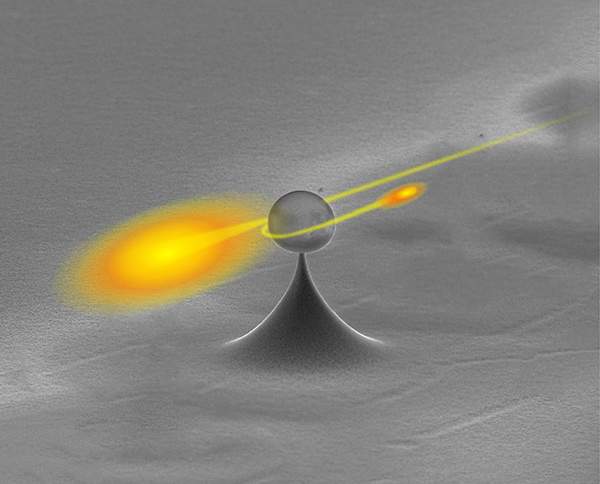At the Weizmann Institute of Science, researchers have managed to “pluck” a single photon – one particle of light – out of a pulse of light.
The findings of this research, which appeared this week in
Nature Photonics, bear both fundamental and practical significance: Light is the workhorse of today’s communication systems, and single photons are likely to be the backbone of future quantum communication systems. In addition, say the scientists, the apparatus they have devised will spur further research into the fundamental particle nature of light.
“Once we move over to quantum communication, information will have to be encoded in single photons,” says
Dr. Barak Dayan, head of the Weizmann Institute Quantum Optics group. “Each photon will then represent a single ‘qubit’ – a quantum bit that can exist in more than one state at the same time (for example, an equal combination of both 1 and 0).”
Dayan and his research team, led by Dr. Serge Rosenblum and Orel Bechler, set out to demonstrate a scheme for pulling just one photon out of a stream, on demand. Their mechanism relies on a physical effect that they call single-photon Raman interaction, or SPRINT, which is based on a single atom, or atom-like system. “The advantage of SPRINT,” says Dayan, “is that it is completely passive - it does not require any control fields, just the interaction between the atom and the optical pulse.” In previous research, he and his team had employed SPRINT as a switch for single photons that sent them down different pathways, effectively turning the apparatus into a photonic router. In this work, the atom becomes a tap rather than a switch, snatching one photon from the flow and then turning itself off. “It is not trivial,” says Dayan, “to have a mechanism that continues to function even in high fluxes of photons and to remove just one photon.”

The experimental setup of Weizmann’s quantum optics group relies on state-of-the-art technologies: laser cooling and trapping of atoms (in this case rubidium), the fabrication of chip-based, ultrahigh-quality glass microspheres, and optical nanofibers.
“The ability to divert a single photon from a flow could be harnessed for various tasks,” says Dayan, “from creating nonclassical states of light that are useful for basic scientific research, through eavesdropping on imperfect quantum-cryptography systems that rely on single photons, to increasing the security of your own quantum-communication systems.
The existence of photons was first suggested by Einstein in 1905, yet many of their properties are just now coming to light. Dayan believes their new method will expand our capabilities to study and control them as individual particles.
Dr. Barak Dayan’s research is supported by the Benoziyo Endowment Fund for the Advancement of Science; the Crown Photonics Center; the Rothschild Caesarea Foundation; and the Deloro Institute for Advanced Research in Space and Optics. Dr. Dayan is the incumbent of the Joseph and Celia Reskin Career Development Chair.
